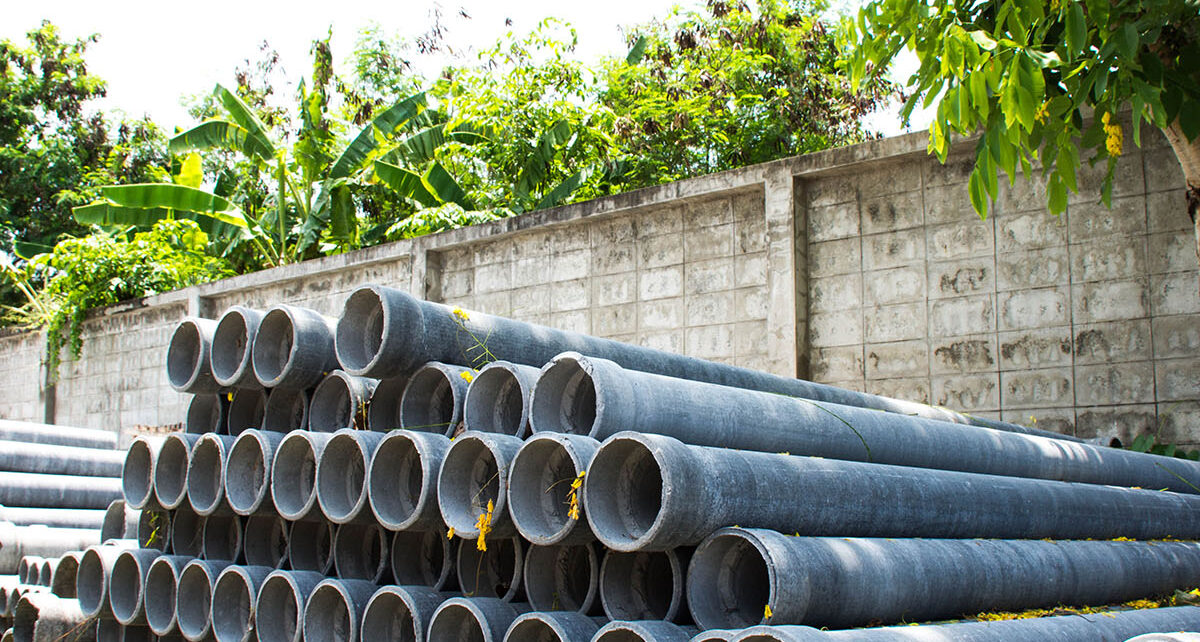Common Household Products Containing Asbestos
Asbestos was once widely used in many household items. Some common products that may contain asbestos include:
- Insulation materials: Used in walls, attics, and pipes.
- Floor tiles: Often found in older homes, especially in vinyl tiles.
- Roofing materials: Such as shingles and felt.
Historical Use of Asbestos in Construction
Asbestos was popular in construction for several reasons:
- Fire resistance: It can withstand high temperatures, making it ideal for fireproofing.
- Durability: Asbestos materials are strong and long-lasting.
- Cost-effectiveness: It was cheaper than many other materials at the time.
Why Asbestos Was Popular in Home Building
The popularity of asbestos in home building can be attributed to:
- Versatility: It could be used in various applications, from insulation to roofing.
- Sound absorption: Asbestos helps reduce noise, making homes quieter.
- Availability: It was readily available and easy to work with, leading to its widespread use.
Health Risks of Asbestos Exposure
How Asbestos Fibers Affect the Lungs
Asbestos fibers are tiny and can easily be inhaled. Once they enter the lungs, they can cause serious damage. Here are some ways they affect lung health:
- Inflammation: The fibers can irritate lung tissue, leading to swelling.
- Scarring: Over time, the lungs may develop scars, making it hard to breathe.
- Cancer Risk: Long-term exposure can increase the risk of lung cancer and other asbestos-related diseases.
Long-Term Health Consequences
The effects of asbestos exposure may not show up for many years. Some long-term health issues include:
- Mesothelioma: A rare cancer that affects the lining of the lungs.
- Asbestosis: A serious lung disease caused by inhaling asbestos fibers.
- Lung Cancer: Increased risk, especially for smokers.
Symptoms of Asbestos-Related Diseases
People exposed to asbestos may experience various symptoms, which can include:
- Persistent Cough: A cough that doesn’t go away.
- Chest Pain: Discomfort or pain in the chest area.
- Shortness of Breath: Difficulty breathing, especially during physical activity.
Understanding these health risks is crucial for anyone who may have been exposed to asbestos, especially in older homes.
Identifying Asbestos in Your Home
Signs of Asbestos-Containing Materials
When looking for asbestos in a home, homeowners should be aware of certain signs that may indicate the presence of asbestos. Here are some common indicators:
- Age of the Home: Homes built before the 1980s are more likely to contain asbestos.
- Material Type: Look for insulation, floor tiles, or ceiling tiles that may be made from asbestos.
- Condition of Materials: Damaged or crumbling materials can release asbestos fibers into the air.
Professional Asbestos Inspection
If there are concerns about asbestos, hiring a professional inspector is a wise choice. Here’s what to expect:
- Visual Assessment: The inspector will examine the home for potential asbestos-containing materials.
- Sampling: They may take samples of materials for laboratory testing.
- Report: After the inspection, a detailed report will outline any findings and recommendations.
DIY Asbestos Testing Kits
For those who want to check for asbestos themselves, DIY testing kits are available. Here’s how to use them:
- Purchase a Kit: Buy a reliable asbestos testing kit from a store or online.
- Follow Instructions: Carefully follow the instructions to collect samples.
- Send for Testing: Mail the samples to the lab as directed and wait for results.
Legal Actions for Asbestos Exposure
Filing a Lawsuit for Asbestos Exposure
When someone is harmed by asbestos, they may consider taking legal action. Here are some steps to follow:
- Consult a Lawyer: Find a lawyer who specializes in asbestos cases. They can help understand the legal process.
- Gather Evidence: Collect documents and records that show exposure to asbestos. This can include medical records and employment history.
- File a Claim: The lawyer will help file a lawsuit against the responsible parties, which could be manufacturers or employers.
Compensation for Asbestos-Related Illnesses
People affected by asbestos may be entitled to legal compensation. This can cover:
- Medical Expenses: Costs for treatments and hospital visits.
- Lost Wages: Money lost due to being unable to work.
- Pain and Suffering: Compensation for emotional distress and physical pain.
Legal Resources for Affected Families
Families dealing with asbestos exposure can find support through various resources:
- Support Groups: These groups provide emotional support and share information.
- Legal Aid Organizations: Legal firms usually offer free mesothelioma case reviews while some organizations offer free legal help for those who cannot afford a lawyer.
- Educational Materials: Many websites and books explain the legal rights of those affected by asbestos.
Preventing Asbestos Exposure
Safe Handling of Asbestos Materials
When dealing with materials that may contain asbestos, it is crucial to follow safety guidelines to minimize exposure. Here are some key points to remember:
- Wear Protective Gear: Always use masks, gloves, and protective clothing when handling suspected asbestos materials.
- Avoid Disturbing Asbestos: If you suspect a material contains asbestos, do not touch or disturb it. Leave it undisturbed if it is in good condition.
- Seal Off the Area: If you must work in an area with potential asbestos, seal it off to prevent fibers from spreading.
Asbestos Abatement Procedures
If asbestos is found in a home, proper removal is essential. Here are steps to consider:
- Hire Professionals: Always seek help from certified asbestos removal experts who know how to handle the material safely.
- Follow Local Regulations: Ensure that the removal process complies with local laws and guidelines regarding asbestos.
- Dispose of Asbestos Properly: Asbestos waste must be disposed of in designated areas to prevent contamination.
Hiring Certified Asbestos Removal Professionals
Choosing the right professionals is vital for safe asbestos removal. Consider the following:
- Check Credentials: Ensure the company is licensed and has experience in asbestos removal.
- Read Reviews: Look for feedback from previous clients to gauge the quality of their work.
- Get Multiple Quotes: Compare prices and services from different companies to find the best option.
Asbestos Regulations and Guidelines
Federal Asbestos Regulations
The federal government has established rules to manage asbestos in buildings and protect public health. Key regulations include:
- Asbestos Hazard Emergency Response Act (AHERA): This law requires schools to inspect for asbestos and create management plans.
- Occupational Safety and Health Administration (OSHA): OSHA sets safety standards for workers who may be exposed to asbestos on the job.
- Environmental Protection Agency (EPA): The EPA regulates the disposal of asbestos waste to prevent environmental contamination.
State-Specific Asbestos Laws
Each state may have its own laws regarding asbestos. These can vary widely, but common elements include:
- Inspection Requirements: Some states require inspections before renovations or demolitions.
- Notification Procedures: Homeowners may need to inform local authorities before starting work that could disturb asbestos.
- Disposal Guidelines: States often have specific rules for how to safely dispose of asbestos materials.
International Asbestos Control Standards
Many countries have developed their own standards for asbestos use and management. Important points include:
- Bans on Asbestos: Some nations have completely banned asbestos due to its health risks.
- Regulatory Frameworks: Countries like Canada and Australia have strict regulations to control asbestos use and ensure safe handling.
- Global Awareness: International organizations work to raise awareness about the dangers of asbestos and promote safer alternatives.
Medical Treatments for Asbestos-Related Diseases
Treatment Options for Mesothelioma
Mesothelioma is a serious cancer caused by asbestos exposure. Treatment options include:
- Surgery: Removing the tumor can help, but it depends on how far the cancer has spread.
- Chemotherapy: This uses strong medicines to kill cancer cells. It can help shrink tumors.
- Radiation Therapy: This treatment uses high-energy rays to target and kill cancer cells.
Managing Asbestosis Symptoms
Asbestosis is a lung disease caused by inhaling asbestos fibers. To manage symptoms, patients can:
- Use Oxygen Therapy: This helps people breathe better if they have trouble getting enough air.
- Take Medications: Some medicines can help reduce coughing and improve lung function.
- Participate in Pulmonary Rehabilitation: This program helps patients learn how to breathe better and manage their condition.
Innovative Therapies and Clinical Trials
Research is ongoing to find new treatments for asbestos-related diseases. Some promising areas include:
- Targeted Therapy: This approach focuses on specific characteristics of cancer cells to stop their growth.
- Immunotherapy: This treatment helps the body’s immune system fight cancer more effectively.
- Clinical Trials: Patients can participate in studies testing new treatments that may not be widely available yet.
The Role of Asbestos in Modern Construction
Current Use of Asbestos in Building Materials
Asbestos is not commonly used in new construction today, but it can still be found in some materials. Here are a few examples:
- Insulation: Some older insulation products may still contain asbestos.
- Roofing: Certain roofing materials, especially those made before the 1980s, might have asbestos.
- Flooring: Vinyl tiles and some adhesives used in flooring can also contain asbestos.
Alternatives to Asbestos in Construction
Due to the health risks associated with asbestos, many safer alternatives are now available. These include:
- Fiberglass: A popular choice for insulation that does not pose the same risks.
- Cellulose: Made from recycled paper, this is another safe insulation option.
- Mineral Wool: This material is fire-resistant and does not contain asbestos.
Industry Trends in Asbestos Use
The construction industry is moving away from asbestos. Some trends include:
- Increased Regulation: Stricter laws are being put in place to limit asbestos use.
- Awareness Campaigns: Many organizations are educating builders about the dangers of asbestos.
- Research and Development: Ongoing efforts to find new materials that are both safe and effective for construction.
Environmental Impact of Asbestos
Asbestos Contamination in Soil and Water
Asbestos can be found in the environment, especially in areas where it was used in construction. When asbestos materials break down, tiny fibers can escape into the soil and water. This can lead to:
- Soil contamination: Asbestos fibers can settle in the ground, making it unsafe for gardening or playing.
- Water pollution: If asbestos enters water sources, it can affect drinking water quality and harm aquatic life.
- Air quality issues: Disturbing contaminated soil can release fibers into the air, posing health risks to nearby residents.
Impact on Wildlife and Ecosystems
Asbestos exposure is not just a human concern; it can also harm wildlife. The effects include:
- Habitat destruction: Areas contaminated with asbestos may become uninhabitable for animals.
- Health risks to animals: Wildlife that comes into contact with asbestos can suffer from respiratory issues and other health problems.
- Disruption of food chains: Contaminated plants and water sources can affect the entire ecosystem, impacting various species.
Cleanup Efforts and Environmental Policies
To address the dangers of asbestos, various cleanup efforts and policies are in place:
- Site assessments: Environmental agencies often conduct tests to identify asbestos contamination in affected areas.
- Remediation projects: These projects aim to remove asbestos from contaminated sites to protect public health and the environment.
- Regulations: Governments have established rules to limit asbestos use and ensure safe disposal, helping to prevent future contamination.
Asbestos Awareness and Education
Community Programs on Asbestos Risks
Many communities offer programs to help people understand the dangers of asbestos. These programs often include:
- Workshops that teach about asbestos and its health risks.
- Information sessions where experts answer questions and provide resources.
- Outreach campaigns to raise awareness in neighborhoods about safe practices.
Educational Resources for Homeowners
Homeowners can access various resources to learn more about asbestos, including:
- Guides that explain how to identify asbestos in the home.
- Online courses that cover the health effects of asbestos exposure.
- Pamphlets available at local health departments that provide tips on safe handling.
Raising Awareness Through Advocacy Groups
Advocacy groups play a crucial role in spreading awareness about asbestos. They often:
- Organize events to educate the public about asbestos dangers.
- Lobby for stronger regulations to protect people from exposure.
- Support affected families by providing information and resources.
Case Studies of Asbestos Exposure
Notable Asbestos Exposure Incidents
- Widespread Use in Schools: Many schools built before the 1980s used asbestos in walls, ceilings, and floors. This led to students and staff being exposed over many years.
- Shipyard Workers: Workers in shipyards often handled asbestos materials without proper safety gear, leading to high rates of lung diseases among them.
- Construction Sites: During renovations of older buildings, workers frequently disturbed asbestos-containing materials, putting themselves and nearby residents at risk.
Lessons Learned from Past Cases
- Importance of Safety Regulations: Past incidents highlight the need for strict safety rules to protect workers and the public from asbestos exposure.
- Awareness and Education: Educating people about the dangers of asbestos can help prevent future exposure.
- Regular Inspections: Regular checks of older buildings can identify asbestos and help manage risks before they become serious.
Impact on Communities and Families
- Health Issues: Families living near contaminated sites often face serious health problems, including lung cancer, asbestosis, and mesothelioma.
- Emotional Toll: The stress of dealing with health issues and potential legal battles can take a heavy emotional toll on affected families.
- Economic Consequences: Communities may suffer economically due to increased healthcare costs and decreased property values in areas known for asbestos exposure.





